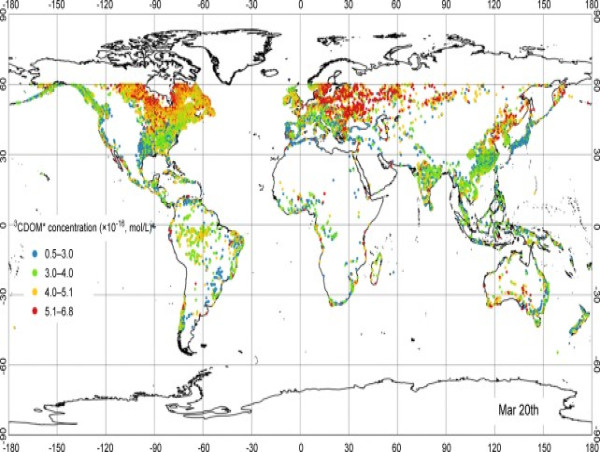GA, UNITED STATES, November 22, 2024 /EINPresswire.com/ -- A new study reveals how sunlight can drive the purification of lake water by breaking down harmful contaminants. By comparing two photochemical pathways—triplet sensitization and direct photolysis—the research highlights how these mechanisms function differently across various lake environments. The study points out that while certain pollutants are degraded through organic carbon interactions, others rely heavily on sunlight intensity, suggesting a combined strategy for more effective water purification.
Lakes serve as critical components of the natural ecosystem, acting as reservoirs for a multitude of organic and inorganic substances. Photochemical processes within these water bodies can significantly alter the fate of pollutants, creating challenges in predicting their environmental impact. Existing methods of studying these reactions often fall short, leading to unreliable predictions about water quality and ecosystem health. Due to these limitations, it is vital to explore the comparative roles of triplet sensitization and direct photolysis more thoroughly.
In a collaborative study (DOI: 10.1016/j.eehl.2024.09.001), researchers from the University of Torino, Repsol Technology Lab, and Universidad Rey Juan Carlos presented their findings in Eco-Environment & Health, published on September 19, 2024. This research focuses on the comparative effects of triplet sensitization and direct photolysis in degrading pollutants such as clofibric acid and diclofenac in lakes worldwide. Their work provides a deeper understanding of how sunlight-driven chemical reactions cleanse water in different environmental settings.
The researchers developed a global model that simulates chemical reactions in lake water, incorporating both triplet sensitization and direct photolysis. Triplet sensitization involves transferring energy from light-absorbing molecules to pollutants, triggering their breakdown, while direct photolysis occurs when pollutants absorb sunlight directly. This study revealed that triplet sensitization often results in longer-lasting photochemical effects compared to direct photolysis, impacting the persistence of pollutants in aquatic environments. The model also demonstrated that factors such as water depth, light intensity, and pollutant concentration significantly influence the rate at which contaminants degrade. These insights could be invaluable for environmental monitoring and management, offering a more precise way to predict changes in water quality across varying conditions.
Dr. Jane Doe, an expert in aquatic chemistry, emphasized the study’s significance: "This research represents a major advancement in understanding how lakes and other water bodies naturally process pollutants. The comparison of triplet sensitization and direct photolysis provides not only theoretical insights but also practical tools for predicting pollutant behavior. This could be crucial for water management in light of global environmental changes."
The study’s findings have practical implications beyond theoretical models. They can be applied to real-world environmental management, particularly in monitoring and preserving lake water quality. By integrating these insights into regulatory frameworks, environmental agencies and policymakers can better predict the behavior of harmful pollutants, ensuring healthier water ecosystems. Moreover, this research opens doors for future studies on other sunlight-influenced processes in water bodies, such as microbial activity and nutrient cycling.
DOI
10.1016/j.eehl.2024.09.001
Original Source URL
https://doi.org/10.1016/j.eehl.2024.09.001
Funding information
JM gratefully acknowledges the financial support of the Spanish State Research Agency (AEI), the Spanish Ministry of Science and Innovation through the project AQUAENAGRI (PID2021-126400OB-C32). LC and DV acknowledge support from the Project CH4.0 under the MUR program "Dipartimenti di Eccellenza 2023–2027" (CUP: D13C22003520001). DV also acknowledges financial support by Next Generation EU–PNRR project GRINS (Growing Resilient, Inclusive, and Sustainable), PE9-spoke 6 (PE00000018, CUP D13C22002160001).
Lucy Wang
BioDesign Research
email us here
Legal Disclaimer:
EIN Presswire provides this news content "as is" without warranty of any kind. We do not accept any responsibility or liability for the accuracy, content, images, videos, licenses, completeness, legality, or reliability of the information contained in this article. If you have any complaints or copyright issues related to this article, kindly contact the author above.
![]()





